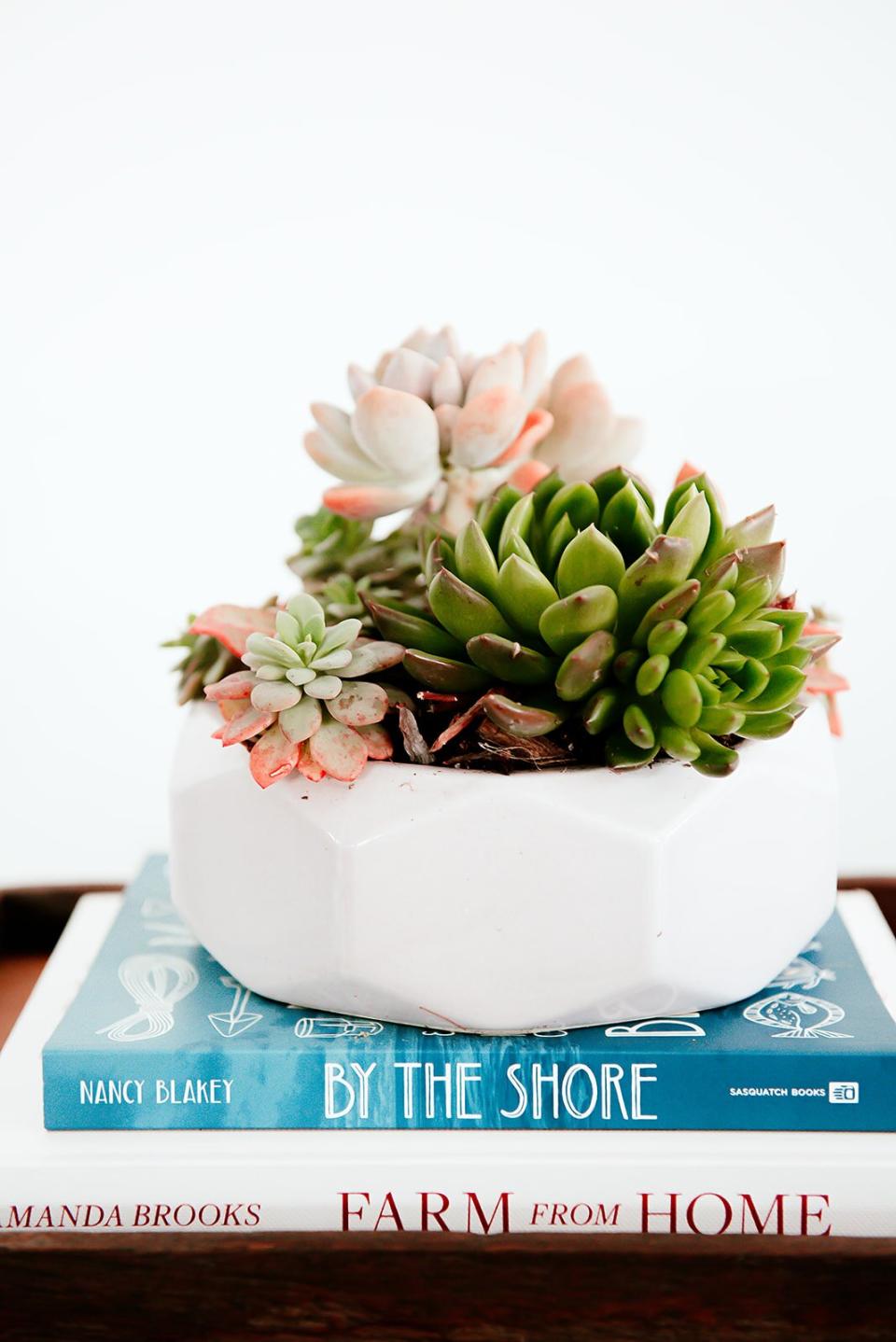How to Keep Your Succulents Alive

Succulents have a reputation for being troopers. As desert natives, they're accustomed to harsh conditions, capable of surviving both lengthy droughts and extreme temperatures better than many of their plant peers. In fact, succulents even store their own water in their signature thick, fleshy leaves and stems (the word "succulent" is derived from the Latin word sucus, meaning "juice"). That said, just because you can neglect your succulents doesn't mean you should. The more you care for your plants, the better they'll look. And really, don't you owe your little friends a better life?
"I encourage people to think about their relationship with their plants," says Summer Rayne Oakes, founder of Homestead Brooklyn and author of the book How to Make a Plant Love You. "It's like dating—you can't just take them home because they're cute, then forget about them."
Related: How to Keep Your Houseplants Happy During the Winter

Give Them Enough Light
Although there are some shade-loving varieties, in general, succulents need light—lots and lots and lots of light. Oakes' Brooklyn home has four large south-facing windows, most of which are reserved for light-loving succulents. "Not everyone can successfully grow succulents in their home," she says. "If you only have north-facing windows, you probably don't get enough light for most succulents."
Too much light, however, can be harmful. If succulents receive an abundant amount of intense light during summer months, they may turn pale and go dormant. If this happens, simply move them further from the window. For homes that don't receive large amounts of natural light, specialized grow lights can help succulents thrive. Or opt for the few varieties that can live in darker conditions, such as ox tongue and snake plants.
Be Soil-Savvy
As a succulent pro, Oakes frequently improvises her potting mixes in order to best care for her plants, adding a little of this and a little of that to achieve the perfect succulent blend. Beginners, however, can pick up a bag of pre-mixed succulent soil at any garden center. These lightweight blends drain better than standard soil, which is too dense for delicate, rot-prone succulent roots. Succulent mixes vary but generally contain a mix of sphagnum peat moss, perlite, and mycorrhizae to promote drainage and prevent soil compaction.
Select Planter s with Drainage
To further encourage dry, healthy roots, Oakes suggests that new gardeners use terra cotta planters with drainage holes; the clay naturally wicks away moisture, and excess water can escape through the bottom. However, once you're more familiar with succulents and their unique soil and watering needs, you can use almost any vessel, from teapots to dresser drawers.
Water with Care
Although succulents are laid-back for the most part, there is one easy way to kill them: too much water. "Generally speaking, most people are overwatering their succulents," says Oakes. "Many have very sensitive roots." Each variety has different needs, and environmental factors such as the amount of light and the temperature of the air can affect how much water an individual plant needs. When natural light levels are low, mimic the dry-season needs of the succulent plant by watering them less frequently. However, as a general rule, Oakes advises watering succulents once a week in the summer months and once every two weeks in the winter in order to best care for them.
Regardless of your watering schedule, pay attention to your plant. It may need more water during the summer, especially if it receives intense light. Your soil shouldn't be wet, but it shouldn't look dry and dusty, either. Shriveled leaves are a clear sign that your plant friend needs a drink. "Plants aren't décor," says Oakes. "You have to observe them and see what they need."
Troubleshooting Tips
Succulents suffer from few pest problems, especially when kept indoors. But they are notorious for becoming "leggy." When compact, low-growing succulents don't receive enough light, they sprawl upwards trying to find the sun, resulting in an awkward "leggy" appearance. Moving your plant closer to the window will stop the unwanted growth, and pruning it back should help correct the problem. As for Oakes, she tends to let her succulents morph as time goes on. "Plants, and succulents especially, will change over time," she says. "You can buy certain types that maintain their cuteness, but then you miss out on a lot of plants. I try not to get obsessed with things looking Pinterest-perfect."